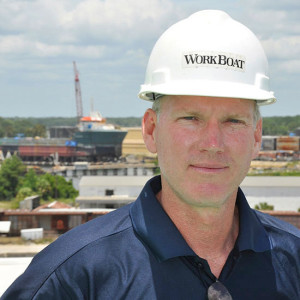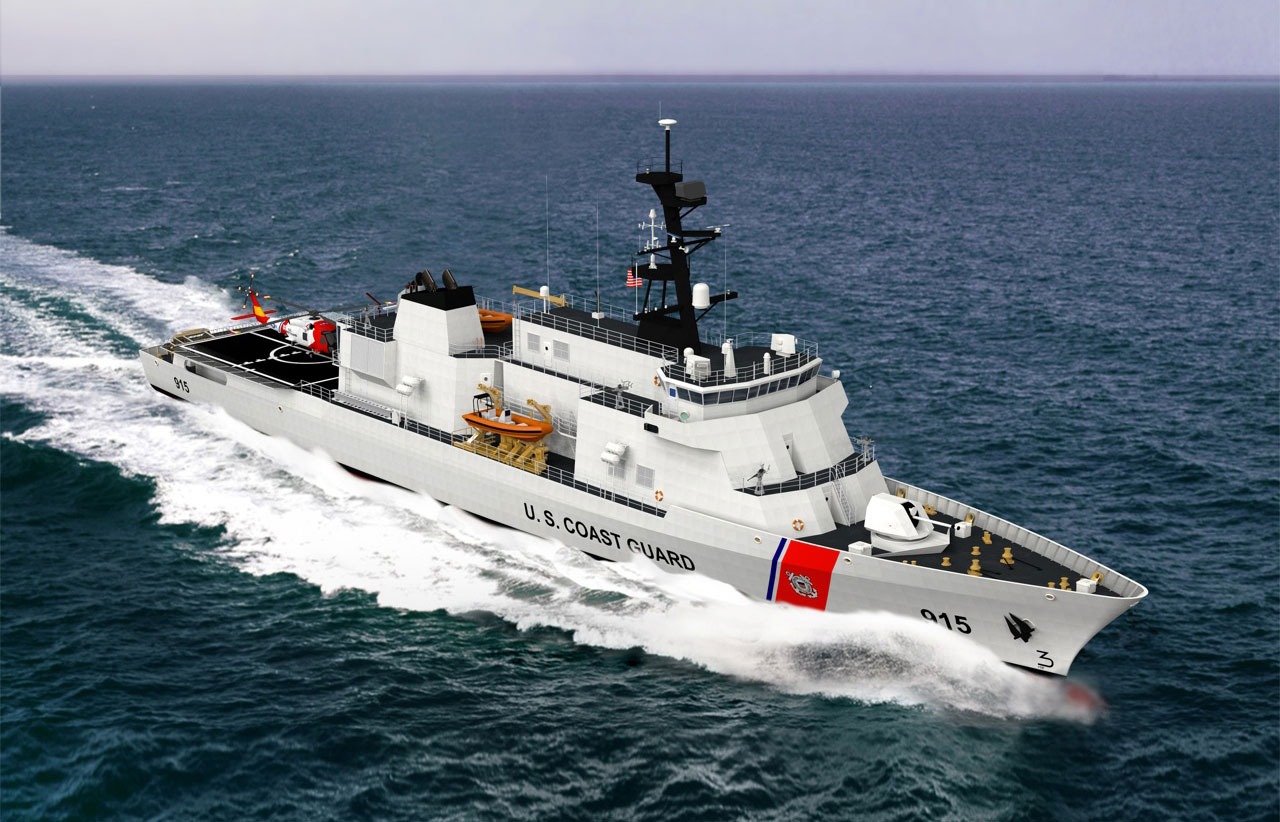Yesterday, the Coast Guard awarded the contract to design and build the first series of nine offshore patrol cutters (OPCs) to Eastern Shipbuilding Group Inc., Panama City, Fla. The initial contract for detailed design work is worth $110.29 million.
The contract is initially for nine vessels with options for two additional vessels. Construction of the first vessel is expected to commence in 2018. The full Phase II award has a potential value of $2.38 billion if all options are exercised.
"Ultimately we'll end up with 25 vessels built over the next 20 years built here at Eastern Shipbuilding in Panama City," Eastern CEO Brian D'Isernia told WHJG TV in Panama City Beach.
The Coast Guard plans to build a total of 25 OPCs at an estimated cost of $10.5 billion. Its the largest vessel procurement contract in Coast Guard history, Eastern said.

Eastern Shipbuilding's Allanton Road shipyard in Panama City, Fla. Eastern Shipbuilding photo.
The award is the culmination of more than two years of analysis with the contractors who submitted proposals. Eastern beat out Bollinger Shipyards and Bath Iron Works, who were named finalists to build the OPC in February 2014. The Coast Guard awarded each yard a $21.95 million fixed-price contract for preliminary and contract design for the OPC in 2014. The Coast Guard issued the initial Request for Proposal in September 2012, and responses were received in January 2013. Other competitors for the OPC contract were Huntington Ingalls Industries, Marinette Marine, General Dynamics, Nassco, Vigor Industrial and VT Halter Marine.
Eastern’s design includes the following: 360'x54', a draft of 17 feet, speed in excess of 22 knots, a range of 10,200 nautical miles (at 14 knots), endurance for 60-day patrol cycles, capable of carrying an MH-60R or MH-65 helicopter and three over-the-horizon (OTH) cutter boats. The OPC will conduct missions including law enforcement, drug and migrant interdiction search and rescue, and other homeland security and defense operations. Each OPC will feature a flight deck and advanced command, control, communications, computers, intelligence, surveillance and reconnaissance equipment.
“The offshore patrol cutter acquisition is the Coast Guard’s highest investment priority, and we are proud to announce this important milestone,” said Coast Guard Commandant Adm. Paul Zukunft. “The offshore patrol cutter will replace our aging medium endurance cutters and provide the majority of offshore presence by the Coast Guard’s cutter fleet. Whether combating transnational organized criminal networks off Central America or patrolling in the increasingly accessible Arctic, the offshore patrol cutter will ensure our nation’s maritime security and economic interests are preserved for decades to come.”
“We knew from the beginning that the U.S. Coast Guard would appreciate our excellent performance record of on time delivery of high quality vessels built by our first-rate craftsmen,” Joey D’Isernia, Eastern's president, said in a statement.
The OPC will bridge the capabilities of the 418-foot national security cutters, which patrol the open ocean, and the 154-foot fast response cutters, which serve closer to shore. The ships will replace the 270-foot and 210-foot medium endurance cutters, which have been in service for 30 to 50 years.
Delivery of the first OPC is planned for fiscal year 2021.




